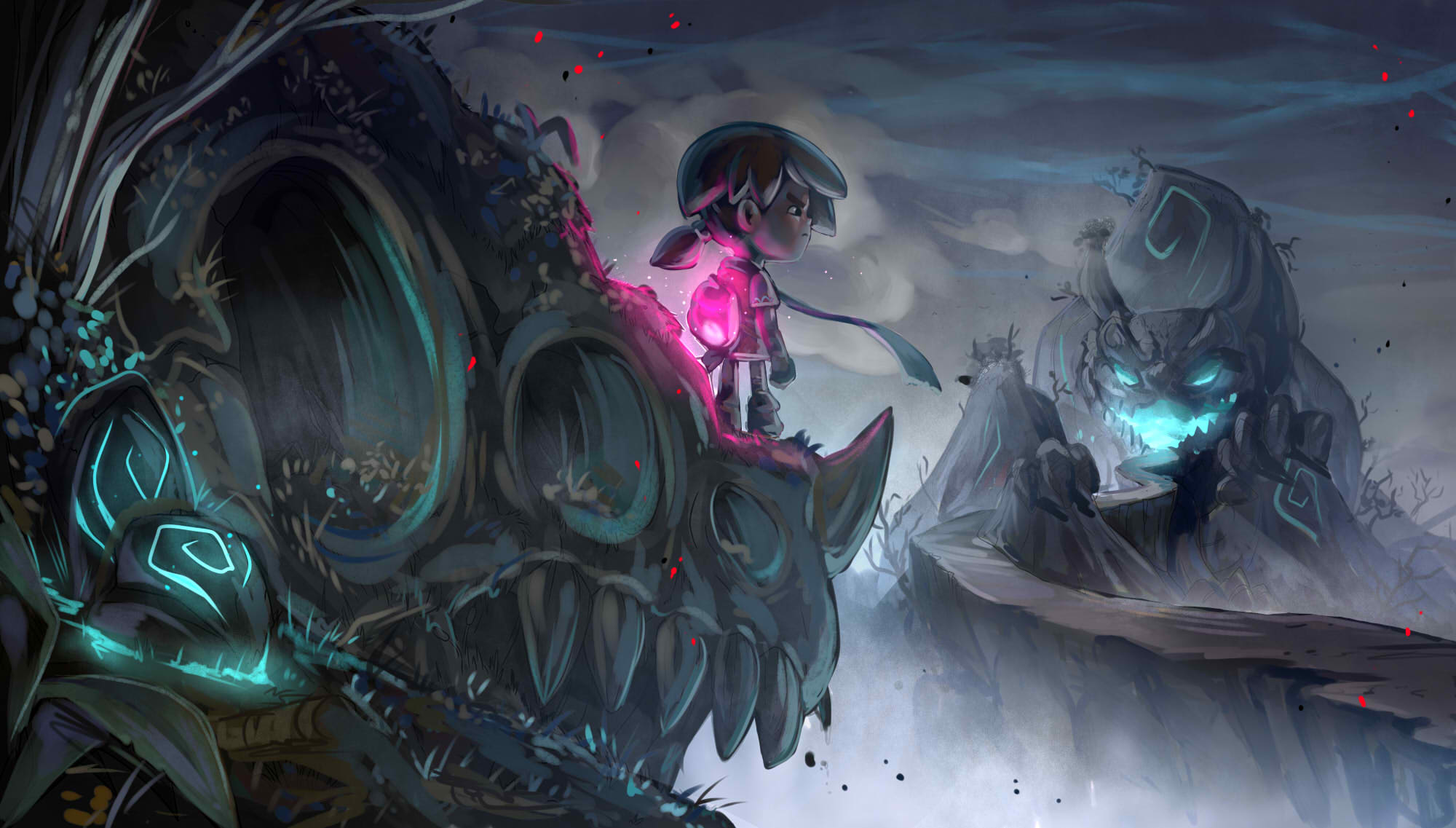Mexico’s Pixelatl Festival Unveils 2020 Trailer By Exodo Animation Studio (Exclusive)
Pixelatl Festival may be going virtual this year, but the goal of its organizers is that the event’s core offering will remain largely unchanged and that the “usual activities [will] occur as if we were all together in Cuernavaca.” As in previous years, the fast-growing Mexican event (September 1–5) will feature screenings, workshops, lectures, and networking opportunities for Latin America’s animation, comics, and games industries.
Another returning tradition is the collaboration with a leading Mexican studio to create the festival’s trailer. Cartoon Brew is delighted to premiere the trailer for Pixelatl 2020, the event’s ninth edition, which channels this year’s theme: “We are all children of the same land.” It was directed by Paco Zamudio at Exodo Animation Studio:
The studio is based in Guadalajara, a city with a strong stop-motion heritage (this is where Guillermo del Toro is setting up his new animation center). Exodo’s specialisms lie elsewhere: since opening in 2006, it has produced mostly 3d animation, alongside some 2d, for clients including Coca-Cola, Sony, and Honda, as well as features and series in Latin America and beyond. With a client list that is 90% non-Mexican, the studio embodies the collaborative international outlook that Pixelatl was set up to promote.
As in the past, the brief was to create a trailer inspired by Pixelatl’s manifesto for the year. This edition’s manifesto, which can be read here, alludes to cultural divisions, environmental degradation, and the ravages of capitalism, and issues a call for unity. Below, Zamudio, an Exodo co-founder, tells us how he and his team set about interpreting this theme, and how he sees the state of Mexican and Latin American animation…
Cartoon Brew: This year’s slogan is “We are children of the same land.” How long did it take you to create a concept based on that theme? What was your process — did you try out other ideas?

Paco Zamudio: I worked on several concepts until I developed a version I really liked; I thought it would be really interesting to work on an idea that could give us a look into the hero’s journey, as well as tell a bit of his story through the video.
I took inspiration from the ideology of yin and yang to merge our story with the concept of #MismaTierra (#SameLand). We discussed it with Pixelatl’s team and we agreed that it worked well.
Were you given any other directions by Pixelatl, or did you have complete creative freedom?
Yes, we had complete creative freedom, but since we have a very good relationship with Pixelatl’s team, we were in contact with them every time we had questions about the overall vision behind the slogan.
You produce both 2d and 3d animation. Why did you choose to make this film in 3d?
Because 3d is our core business and where we feel more comfortable. Also, this technique is the one that we considered could have the biggest visual impact, because we can go into extreme detail when creating the assets and animations. Our 2d pipeline is small and we wanted to make a great film for Pixelatl, so we invested all of our human resources in 3d to produce it.
How has the animation scene in Guadalajara, and in Mexico, changed since you set up your studio in 2006?
It’s being a huge shift. When we started, there was only one other 3d animation company in the city. Guadalajara has a long tradition of animators, especially in stop motion; when we broke into the market, cgi was a novelty, and not all the producers and marketing agencies knew how to deal with this new technique.
Fast forward to today, and we have more than 30 companies in the region. We have established an Association for the Animation Industry and some of the companies, like us, are working exclusively for international clients.

As well as service work, you create your own intellectual property. What are the main challenges facing Mexican creators of animation IP today? What are the country’s main strengths in this area?
Our biggest challenge is that we are new in the IP business, and we are competing in a globalized market with players with a long list of successful shows and deep pockets. So we are down the line in the interest of the broadcasters, investors, distributors, etc. Also, we need a bigger workforce — not because there’s a shortage of people interested in the industry, but because we need to teach them well, so they can get into the companies quicker.
I think that we have many strengths. Just to mention a few: we have a long tradition of visual artists with tons of creativity. Mexico has a rich and unique cosmovision and storytelling that are underrepresented in the media. We have a work ethic that exceeds the expectations of most clients.
We in Guadalajara are just a two-hour flight from L.A. Most of the artists speak English fluently. Our city is considered the “Silicon Valley” of Mexico: we have great connectivity and a thriving IT industry.
There is a lot of cultural variation across Latin America. When it comes to producing animation, what do the region’s countries have in common?
Spanish! Having a common language is something that is very important when producing animation — the free flow of ideas because of a common language is invaluable. Latino passion and drive is something hard to find in other cultures. Latin America is all about color, surrealism, creativity, and Mexico is the right place to start with because of its proximity to and understanding of the American culture.

.png)